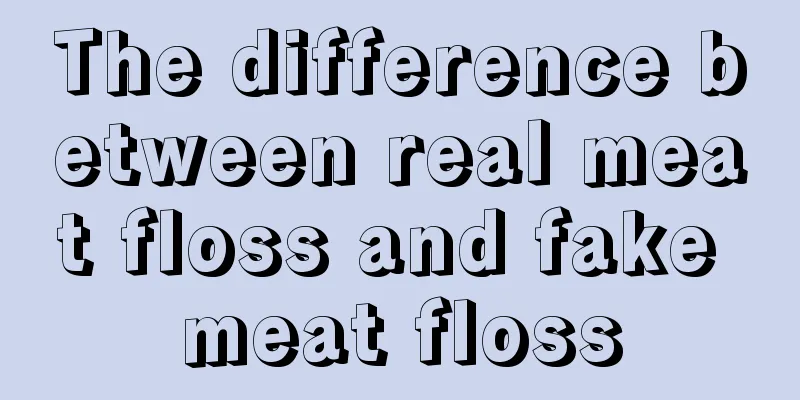What does maxillofacial surgery look at

|
Maxillofacial surgery belongs to oral surgery in medicine. Maxillofacial surgery is an integral part of stomatology and a very important branch of clinical medicine. Maxillofacial surgery mainly studies oral medicine. Common diseases in clinical maxillofacial surgery include temporomandibular joint disorder, maxillofacial arthritis, toothache and other oral diseases. The development of maxillofacial surgery has promoted the development and improvement of oral medicine in my country. Introduction Like other medical specialties, oral and maxillofacial surgery is a branch of medicine that has gradually developed and formed in practice. It is precisely because of the formation and participation of oral and maxillofacial surgery that Chinese dentistry has developed into oral medicine. It should be said that oral and maxillofacial surgery has dual attributes. On the one hand, in order to prevent and treat oral and maxillofacial diseases, oral and maxillofacial surgery cannot be separated from related disciplines such as oral medicine, orthodontics, and dental prosthodontics; on the other hand, due to its own surgical attributes, it shares common characteristics and connections with general surgery, plastic surgery, internal medicine, and pediatrics. Therefore, it can be considered that oral and maxillofacial surgery is not only an important part of stomatology, but also an important branch of clinical medicine. About naming Looking at the history of the development of dentistry, it is inseparable from the development of surgery. Although medical records and practices related to dentistry have existed since BC, the formal establishment and rise of dentistry should be said to have occurred in Western countries in the 17th and 18th centuries. Pierre Fauchard (1678-1761) of France published monographs on dental surgery and improved dental clinical work. He is known as the father of modern dentistry for his contributions. At that time, dentistry was part of the surgical field and was called the dental surgery section. Dentists were also given the title of dental surgeons and were called dental surgeons. To this day, the degree for dentists is still titled Doctor of Dental Surgery (DDS). According to research, most of the founders of ancient dentistry had a doctor of medicine (MD) degree at that time. According to some books, the term "oral surgery" was named by American James Edmund Garretson (1828-1895). Garretson was a surgeon and was in dental school. Teaching oral surgery with a focus on tooth extraction. In the years that followed, the term "oral surgery" was not only used to name hospital departments, but was also widely used in various textbooks and reference books. The concept of maxillofacial surgery appeared in the early 20th century, but when, in which country, and by which scholar it was formally proposed or named "oral and maxillofacial surgery" still needs further verification. In Europe, oral and maxillofacial surgery in the former Soviet Union was relatively developed, especially benefiting from the Second World War in the 1940s. Due to the further development of the treatment of maxillofacial combat injuries, the name of oral and maxillofacial surgery has been widely used and recognized in the former Soviet Union in the late 1940s. Dentistry in China was officially recognized during the adjustment of university departments in 1952. Therefore, it was not until after 1952 that the official establishment and name of oral surgery or oral and maxillofacial surgery were established. In 1956, the Ministry of Health promulgated the Outline of Oral Medicine Education and changed the name of "Oral Surgery" to "Oral and Maxillofacial Surgery", officially recognizing the name of "Oral and Maxillofacial Surgery" in an official document for the first time. For this reason, in 1959, the first formal textbook for Chinese higher medical schools, edited and published by Xia Liangcai, was named "Oral and Maxillofacial Surgery". American W. Harry Archer and Gastav O. Kruger's original book "Oral Surgery" was renamed "Oral and Facial Surgery" after the mid-1970s. At present, the name "oral and maxillofacial surgery" is not only widely accepted by the vast majority of countries, but also used by their societies or academic organizations. Development Overview Like the development of medicine, ancient dentistry is often associated with religion, gods and the powerful. For example, in the 2nd century BC, there were depictions of giants pulling teeth for people in ancient Indian half-reliefs; to this day, in some foreign dental schools, you can still see images of the god of toothache, ancient people pulling teeth, and being punished for pulling the wrong teeth. In the 4th century BC, the famous ancient Greek physician Hippocartes recorded the treatment of jaw fractures, dislocations and tooth extraction in his works. Later, the Persian Rages (850-923 AD) used arsenic acid as a local medication to assist in tooth extraction. In the 11th century, the famous Arab surgeon Abulcasis (1050-1122) made the greatest contribution to oral surgery; in his works, he described and designed a complete set of dental surgical instruments and advocated the use of copper sulfate powder to stop bleeding from wounds. He is also said to have dabbled in cleft lip surgery. In the following years, Amatus Lusitanus (1554), J. F. Dieffenbach (1794-1847), and TNman W. Surgeons such as Broghy (1848-1928) have made historic contributions to cleft lip and palate repair. Oral and maxillofacial surgery is a part of stomatology. It is a discipline that mainly studies the oral organs (teeth, alveolar bones, lips, cheeks, tongue, palate, pharynx, etc.), facial soft tissues, maxillofacial bones (maxilla, mandible, zygomatic bone, etc.), temporomandibular joints, salivary glands, and the prevention and treatment of certain neck diseases. Oral and maxillofacial surgery specifically includes dental and alveolar surgery, pre-restorative surgery, temporomandibular joint disease, maxillofacial injuries, salivary gland diseases, maxillofacial plastic surgery, microsurgery, head and neck tumor surgery, etc. Patients who need tooth extraction, dental implant, alveolar surgery, diagnosis and treatment of maxillofacial cysts, benign tumors, and malignant tumors, patients with oral and maxillofacial infectious diseases, oral and maxillofacial injuries, temporomandibular joint diseases, salivary gland diseases, facial nerve diseases, congenital cleft lip, cleft face and cleft palate, dentofacial deformities, and acquired oral and maxillofacial deformities and defects requiring plastic surgery, etc., should all see the oral and maxillofacial surgery department. |
<<: How to clean the hair inside the bird's nest
>>: Is it good to wash your hair with beer and ginger?
Recommend
What are the causes of hernia in the elderly?
Don't think that the elderly will not get sic...
What is the therapeutic effect of potassium chloride injection?
Potassium chloride injection is a relatively comm...
What are the symptoms of rectal cancer?
Rectal cancer should not be unfamiliar to all of ...
What are the main methods for detecting anthrax virus?
The harm caused by anthrax virus is quite serious...
Side effects of prostate cancer chemotherapy
Chemotherapy is one of the adjuvant treatments fo...
Does a hair dryer have radiation?
The issue of radiation has always been a topic of...
Introduction to sequelae of anal fistula surgery
Anal fistula is a disease that troubles many pati...
How serious is the harm of kidney cancer to the human body
How serious is the harm of kidney cancer to the h...
What diseases can high blood pressure cause? Why are the complications so serious?
The harm of hypertension cannot be underestimated...
Are cecal polyps serious?
The appendix is very prone to inflammation. If ...
Can floral water be sprayed directly onto the skin?
In summer and autumn, the temperature is high and...
How long does it take for sperm to swim to the fallopian tube
Some people have misunderstandings about sex. The...
Be careful of liver cancer if you are so tired! These types of people are most likely to get liver cancer...
The most typical symptom of liver cancer is feeli...
What is the function of freeze-dried tablets
Most freeze-dried tablets can supplement trace el...
How long can you live if kidney cancer metastasizes to the lungs
Since the symptoms of early kidney cancer are not...









